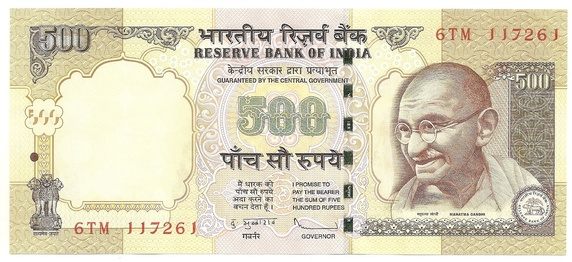
As soon as prime minister Narendra Modi announced the decision to demonetise Rs 500 and Rs 1,000 notes, the analysis of the decision started.
Any such analysis needed the total amount of black money held in the form of cash. Of course, no one knew the right answer to the total amount of black money held in the form of cash by Indians. So, assumptions were made. The one assumption that many analysts and economists ended up making was that 20 per cent of the demonetised notes were black money held in the form of cash.
The 20 per cent figure was just assumed. No explanations were offered for it. It was probably because it was not too big nor too small. And gradually almost everyone who was analysing the issue was using it. But where did the number come from? Or was it just a case of a case of circular mill of ants, where the analysts and economists writing later, just followed the assumptions of the ones who had already written on the topic.
Here is how the argument worked. The total value of demonetised notes stood at Rs 15.44 lakh crore. Let’s assume that 20 per cent of the demonetised notes are black money held in the form of cash. This implies that around Rs 3 lakh crore is black money held in the form of cash.
This money will not be deposited into banks because it is black money (which has turned out to be a totally naive assumption) because any black money deposited into banks would generate an audit trail for the income tax department. Further, every rupee out there is a liability for the Reserve Bank of India(RBI). If Rs 3 lakh crore of demonetised notes do not make it back to the banks, then the liability of RBI shrinks to that extent.
If the liability side of the balance sheet of the RBI shrinks by Rs 3 lakh crore, the asset side needs to shrink as well. And that implies that the RBI would give a special dividend of Rs 3 lakh crore to the central government.
Many economists wrote long reports on this. The long reports led to some editorials as well (including one by an editor who I tremendously respect). These reports were then turned into WhatsApp forwards and passionate discussions happened around it.
In the press conference following the monetary policy on December 7, 2016, the RBI governor Urjit Patel, put the special dividend theory to rest. He clarified that just because the notes don’t come back to the RBI, it does not mean that the liability of the RBI will come to an end. As he said: “They still carry the RBI’s liability as long as only the legal tender characteristic is withdrawn.”
But the question of where did the 20 per cent assumption come from, remains. Could a better assumption have been made?
In May 2012, the finance ministry released a White Paper on Black Money. And that had some very interesting data points. Take a look at the Table 1 below, which deals with the search and seizure operations carried out by the income tax department.
Table 1: Value of assets seized (in Rs. Crore)
| Year | Cash | Jewellery | Other assets | Total Undisclosed Income Admitted (in Rs Crore) |
|---|---|---|---|---|
| 2006-07 | 187.48 | 99.19 | 77.96 | 3,612.89 |
| 2007-08 | 206.35 | 128.07 | 93.39 | 4,160.58 |
| 2008-09 | 339.86 | 122.18 | 88.19 | 4,613.06 |
| 2009-10 | 300.97 | 132.2 | 530.33 | 8,101.35 |
| 2010-11 | 440.28 | 184.15 | 150.55 | 10,649.16 |
| 2011-12 | 499.91 | 271.4 | 134.3 | 9,289.43 |
Source: White Paper on Black MoneyThe cash seized at the time the search and seizure operations were carried out by the income tax department, is a minuscule portion of the total undisclosed income. This becomes clear from Table 2.
Table 2:
| Year | Cash | Total Undisclosed Income Admitted (in Rs Crore) | Proportion of cash in total undisclosed wealth |
|---|---|---|---|
| 2006-07 | 187.48 | 3,612.89 | 5.2% |
| 2007-08 | 206.35 | 4,160.58 | 5.0% |
| 2008-09 | 339.86 | 4,613.06 | 7.4% |
| 2009-10 | 300.97 | 8,101.35 | 3.7% |
| 2010-11 | 440.28 | 10,649.16 | 4.1% |
| 2011-12 | 499.91 | 9,289.43 | 5.4% |
| Total | 1,974.85 | 40,426.47 | 4.9% |
Source: Author calculationsIf we look at data for the period of six years of close to 24,000 seizure and search operations, cash formed around 5 per cent of the undisclosed wealth. Also, the proportion varied from 3.7 per cent to 7.4 per cent over the years.
There are multiple things that this data tells us. First, that people who have black money do not store it in the form of cash. There are better ways of storing that wealth. And more importantly, the government had this information. In fact, the government would have updated information on this and not just to 2011-12.
Second, assuming that 20 per cent of the demonetised notes were black money held in the form of cash, was a terribly wrong assumption to make. This also explains why so much demonetised money has already come into the banks.
In the press conference following the monetary policy of December 7, R Gandhi, one of the deputy governors of the RBI said that close to Rs 11.55 crore of demonetised notes had already made it back to the banks. This amounts to close to 75 per cent of the demonetised notes. Of course, some black money has been converted into white in the process as well. Nevertheless, what Table 2 tells us very clearly is that very little black money is held in the form of cash. Hence, what is coming back to the banks is largely white money.
What this clearly tells us is if the analysts and economists hadn’t worked with the 20 per cent figure of black money held in the form of cash, they would have never come up with the Rs 3 lakh crore special dividend that the RBI would pay the government.
If they had assumed a 5 per cent figure (as per the White Paper) they would have come up with a special dividend of around Rs 77,000 crore (5 per cent of Rs 15.44 lakh crore of demonetised notes). And Rs 77,000 crore sounds nowhere as sexy as Rs 3 lakh crore.
I guess that explains everything.

